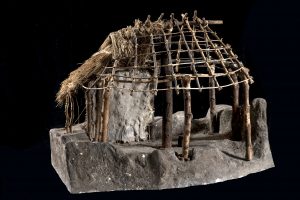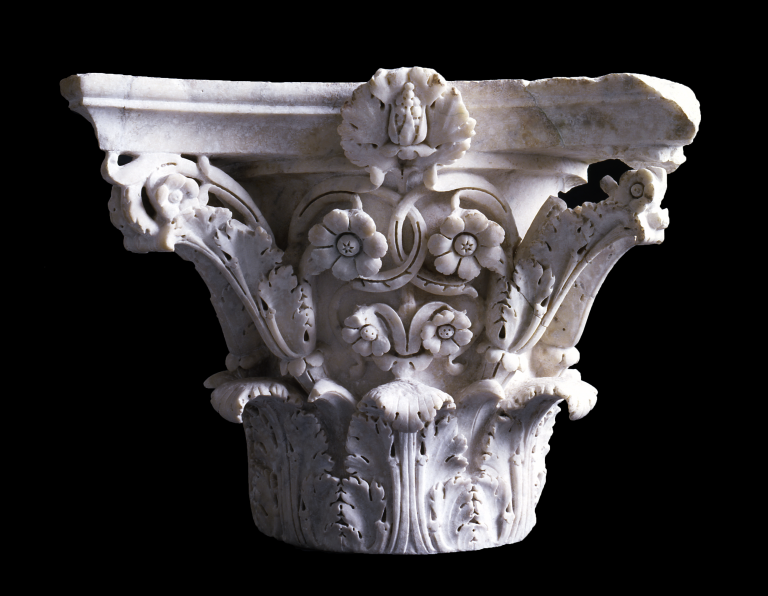Corinthianizing capital
This capital is characterized by a rich vegetal decoration and by the overall high level of its craftsmanship, evident in even the most minute details. In its lower portion, acanthus leaves alternate with other lanceolate leaves, with each tip terminating in a delicate outward curve. Tendrils emerge from the corners of the same leaves, developing upward to form volutes that twist around a five-petaled rosette. At the center, a central stalk produces two small six-petaled rosettes, while two other tendrils twist around each other and go on to encircle two larger, seven-petaled roses. A final, more elaborate flower is visible in the upper portion of the capital, at the center of the abacus. The capital was initially dated to the period of Augustus or Trajan/Augustus, but a more recent and convincing hypothesis now dates it to the Neronian age (mid-1st century AD).




